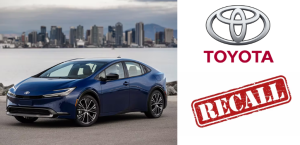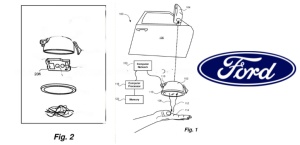By CRM staff
Toronto, Ontario – March 12, 2019 – Mitchell released its Industry Trends Report for the first quarter of 2019. The topics that were discussed in the report included, the impact of 5G wireless, automobile design changes that are positive for the environment, and how technology can improve claims outcomes.
In “5G: What Do High-flying Predictions Mean for the Property and Casualty and Collision Repair Industries?” Mitchell president and CEO Alex Sun explains how 5G – the fifth generation of wireless capabilities – is set to turbocharge communications and the Internet of Things. 5G could bring information to mobile phones 600 times faster than today’s speeds. And, it can enable connections of up to one million devices per square kilometer, as compared to the 2,000 to 10,000 devices per square kilometer provided by 4G.
Simply put, 5G may result in a massive increase in connected devices that respond almost instantly – impacting connected cars, healthcare sensors, thermostats, and other devices.
“5G has significant implications for the entire auto physical damage ecosystem,” noted Sun. “As the number of sensors in vehicles increases, the data they produce may collect details of collision damage, which in aggregate can help manufacturers improve vehicle designs, carriers price coverage appropriately and collision repair facilities accomplish proper and safe repairs.”
With 5G, connected cars will have vastly enhanced capabilities to interact with car-to-car and car-to-infrastructure networks. The time required to charge electronic vehicles should be reduced, making these cars more practical for long-distance driving. The safety and operability of autonomous cars may likewise be significantly improved.
In healthcare, 5G can put the Internet of Things into hyperdrive, for much more sophisticated remote monitoring of patients, improved safety and a more personalized approach to care. 5G can also drive the development of super-precise robots for remote and/or more accurate performance of surgeries and other procedures.
Auto Physical Damage Industry Trends Report: OEM Efforts to Promote Environmental Stewardship
In the second part of the report, Mitchell director of Claims Performance Ryan Mandell shares how carmakers are making a positive impact on the environment in the article “OEM Efforts to Promote Environmental Stewardship.” He details some of the innovations made from OEMs to improve the environment including, the step up of production with electric vehicles and how GM has committed to bringing 20 new electric vehicle models by 2023 as part of their vision of zero emissions. OEMs are starting to use aluminum for vehicle construction to reduce average gross vehicle weights to improve fuel economy and lower energy consumption required in the manufacturing process.
The latest Auto Physical Damage Industry Trends Report also includes Mitchell’s “Six Questions with Olivier Baudoux on Automation in Claims and Collision Repair.” Read the entire Auto Physical Damage Industry Trends Report.
The Casualty Edition: How Smart Automation Produces Stellar Claims Results
Selecting the right technology solutions can be overwhelming. In “The Power of Technology: Six Ways to Improve Casualty Claim Outcomes,” author Shahin Hatamian, Mitchell vice president of Product Management, details six tips, claims, organizations can harness technology to achieve better outcomes. Hatamian points out, “Technology-powered automation for claims processing pays off primarily in two areas: efficiency and consistency.”
With the technology available today claims organizations could further advance their automation strategies, including increasing straight-through processing rates, depending on their individual efficiency goals. Decisions made through automated rules that incorporate best practices, deliver consistent decisions and bring key insights to the surface for the attention of adjusters.
Not only can outcomes and efficiency be improved, but the user experience for adjusters can be improved with automation as well. Automated systems produce valuable data that drive informed decisions and identify areas where corrections are needed. The data generated from these technology systems also enable users to compare their experience and results across the industry, providing insights into performance.
“The Art of Creating a Physician Peer Review Panel: Contracting and Training,” part two of a series, advises that a structured monitoring and mentoring process is the key for onboarding and training the new physician advisor. “Specialized software systems can deliver a seamless approach for contracting with physician advisors,” say, coauthors, Jackie Payne, vice president, Medical Management Services, and Karen Atkins, senior director of Physician Advisor and Peer Review Operations at Mitchell. “It can produce documentation for auditing purposes, track re-credentialing activities, and shorten the time required for audits with URAC and other accrediting bodies.”
“It’s important to have the medical director involved not only in the interview process but also in the training program as well. Peer-to-peer communication between the physician advisor and the medical director establishes a rapport that supports ongoing conversations about quality care and medical decisions,” the authors also advise.
The latest Casualty Industry Trends Report also includes Mitchell’s “Directed Pharmacy Care Drive Positive Results” and “2018 Recap and 2019 Predictions: P&C Regulatory and Legislative Changes.”





































